‘They are just excited Punjabis’ said Kareem, as around fifteen shalwar kameez-wearing men with bushy mustaches jumped back into their minibus at the end of the lane, and drove off. It was one of our very first mornings in Pakistan. We were eating breakfast under the trees beside Kareem’s family guesthouse, when the minibus driver caught sight of us and suddenly braked. The bus door folded open and all the men leaped out and rushed up the lane to say hello, give us fruit, and take a million selfies.
We went back to our breakfast. It was Kareem who coined the term ‘excited Punjabi’. Or at least, he said it first and we ran with it, as we continued to meet plenty of domestic tourists escaping the monsoonal heat in Punjab province, and obviously very excited about every aspect of it. But mostly, about us. While domestic tourism in Pakistan has taken off (excited Punjabis are everywhere, as we soon found out) international visitor numbers are low. They’ve been that way ever since 9/11 when the tourist industry pretty much collapsed, and it’s just now starting to recover.
So that’s why we went to Pakistan. No, not to participate in photo-ops and handshaking sessions, but to discover for ourselves what this relatively unknown and often misrepresented country is all about. Besides, we’re always trying to get away from the hordes. Now we had a valley…ok, a province…alright: a country, practically to ourselves.
Although Pakistan is still off-the-beaten-track, the fact that it is an incredibly hospitable place is no secret. And in addition to their famous kindness, Pakistanis are also patriotic: they’re proud of their beautiful country and they want us to see it in a good light. But at the same time they seem worried that we have a bad impression of it. They don’t want us to, but they are certain we’ve gotten one somewhere along the way, thanks in part to ‘Western Media’ (that came up a fair bit). But in any conversation our latest acquaintance would earnestly assure us that most problems – for visitors, anyway – are a thing of the past. As proof? Well, we don’t even need to travel with personal armed guards anymore! Until the start of this year, that was really a thing in some areas – and still is, in Balochistan, a province with some problems. ‘You should not go there. That place is dangerous’ said Kareem when we asked him about it. It seems even the excited Punjabis stay away from Balochistan.
And then there’s Khyber Pakhtunkhwa (KPK) province. Its capital Peshawar and the valleys surrounding it were a major stop on the famous Hippie trail of the 60s and 70s. The first Lonely Planet ever in print encouraged backpackers in 1973 to kick back here for a few days on their way to Kabul, since ‘hash and grass can be found just about everywhere’. While that’s still probably true, the province now sees very few foreign visitors. The unstable security situation since the 90s until recently has led to the area being mainly off-limits to foreign travelers for a long time. And although the Pakistani government has worked hard to ‘clean up’ the province, we’re still a rarity in places.
For one thing, there is KPK’s proximity to the porous Afghan border and tribal areas where the central government hasn’t got much control. For another, in the past the Taliban made repeated attempts, sometimes successful, to take control of the area. Until recently Peshawar was considered one of the most dangerous cities in Pakistan: during the Soviet-Afghan war it hosted CIA and Pakistani Intelligence-trained mujahideen groups; it has seen a lot of terrorism including a massacre in 2014 when Taliban militants killed 132 school children; and against this backdrop of chaos, a guns and drugs trade easily flourished. All of this has led to most foreign governments issuing travel warnings advising their citizens to stay away from the entire province.
But as the situation improves, things change for the better. We asked around about permits and armed guards and always got the same answer: those aren’t needed anymore in 2019. At our hotel in Gilgit the owner informed us that we’d be ‘much safer there than in this town’. That’s always great to hear when you’re sitting in the garden drinking tea. Since we were apparently chilling out in a hotbed of extremism already, off we went: and the interest in us doubled, or tripled. Maybe more. Every invite for chai, food, and photos – and there were many – came with questions. What we were doing here, and why? Did we like Pakistan? Were we ok – did we have any problems, any at all, and did we need help, any help at all? Many asked us to tell everyone back home about the regular, friendly people we met here (let’s consider that done, as of now).
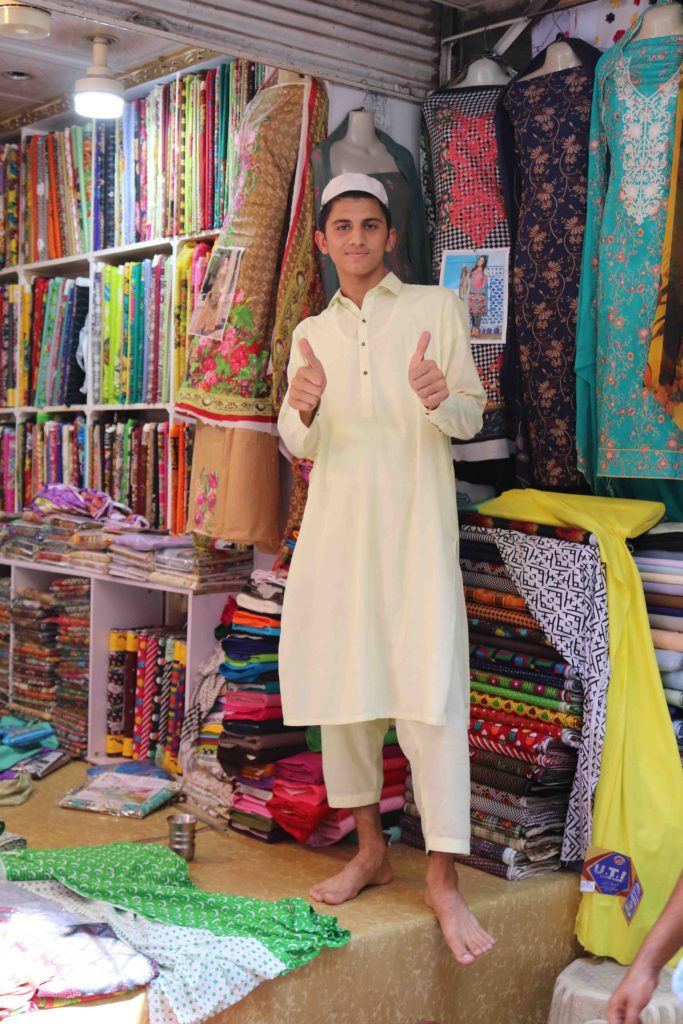
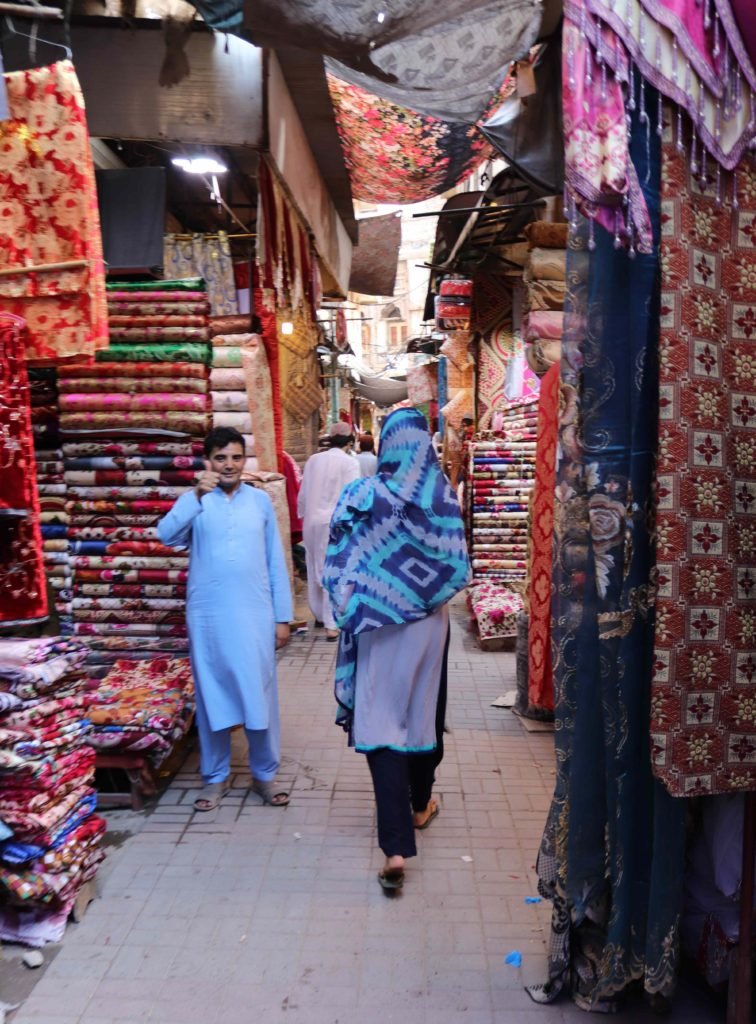
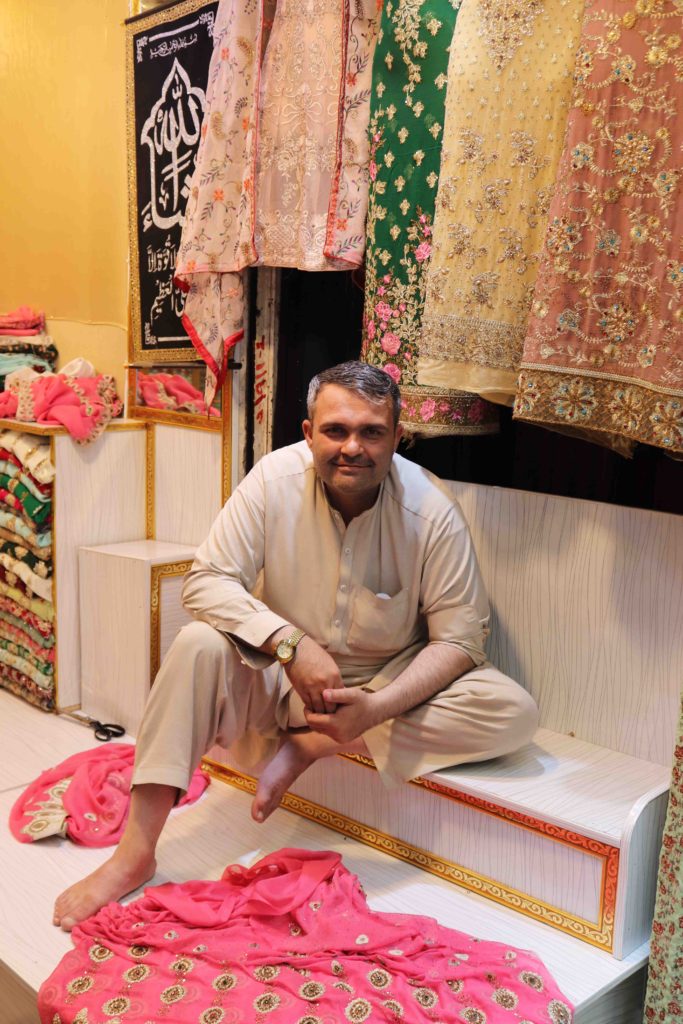
From Peshawar, we ventured further on to Swat Valley. The valley is beautiful, friendly, and historically Buddhist. It’s also known as the ‘Switzerland of Pakistan’ but has the huge advantage, for travellers anyway, of not being expensive and boring (like Switzerland).
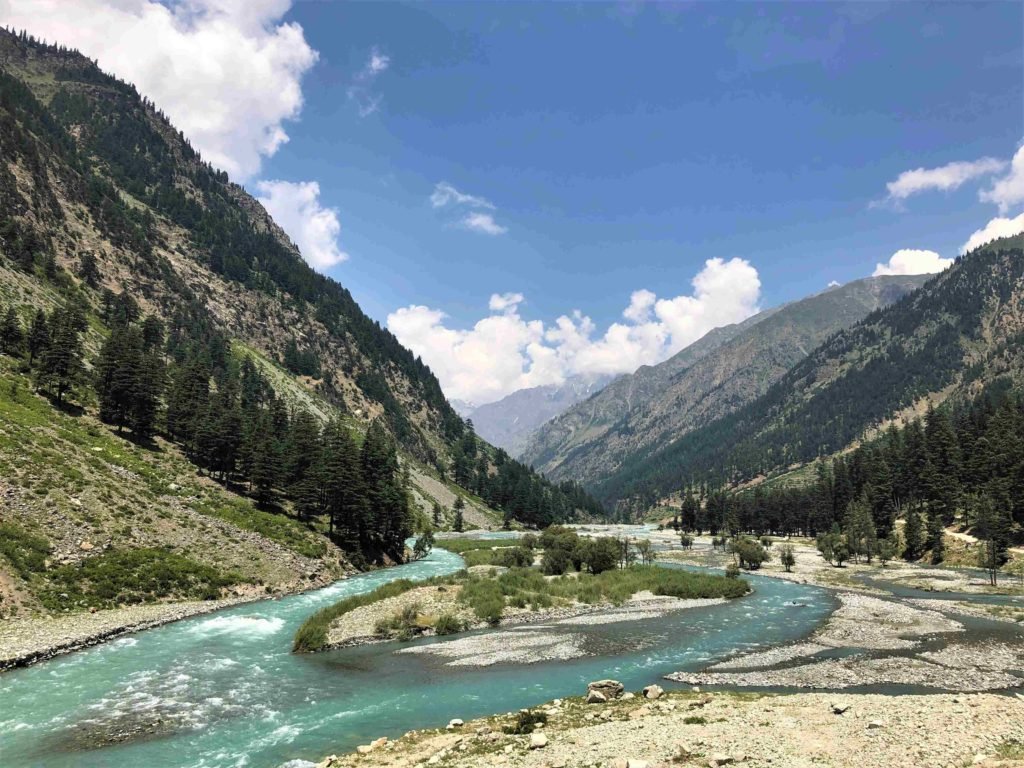
After registering with the police at a checkpoint on our way in, we were free to travel by minibus between villages. Without any guard, we explored bazaars and found good places to eat. We boated on lakes and climbed up to viewpoints.
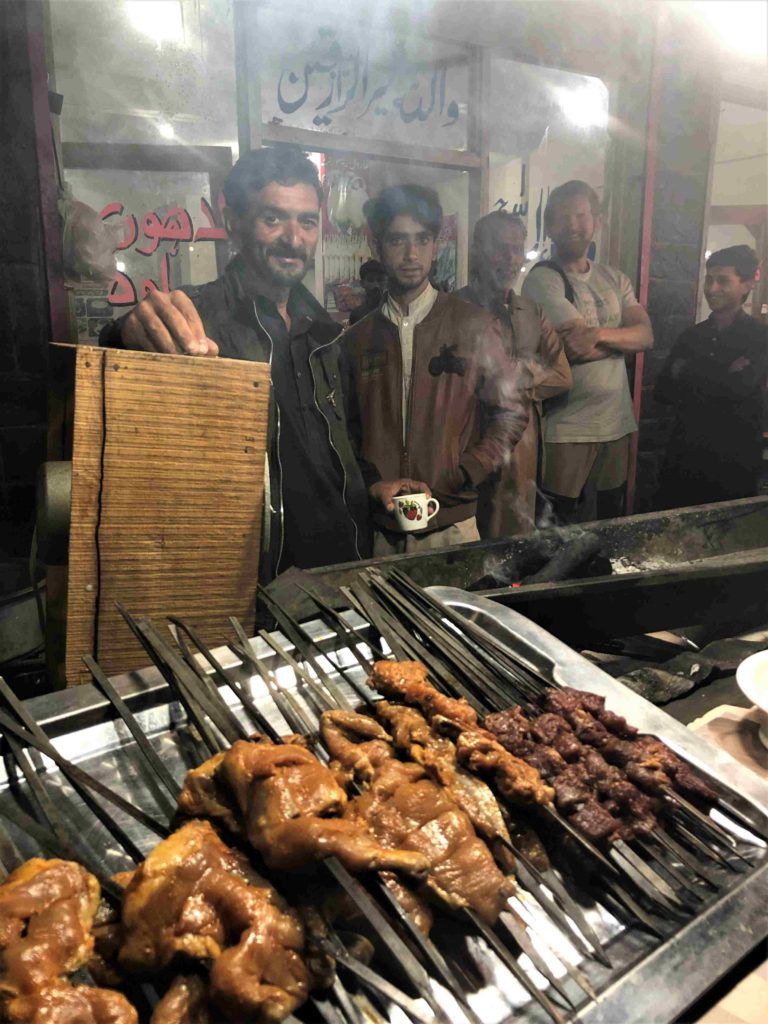
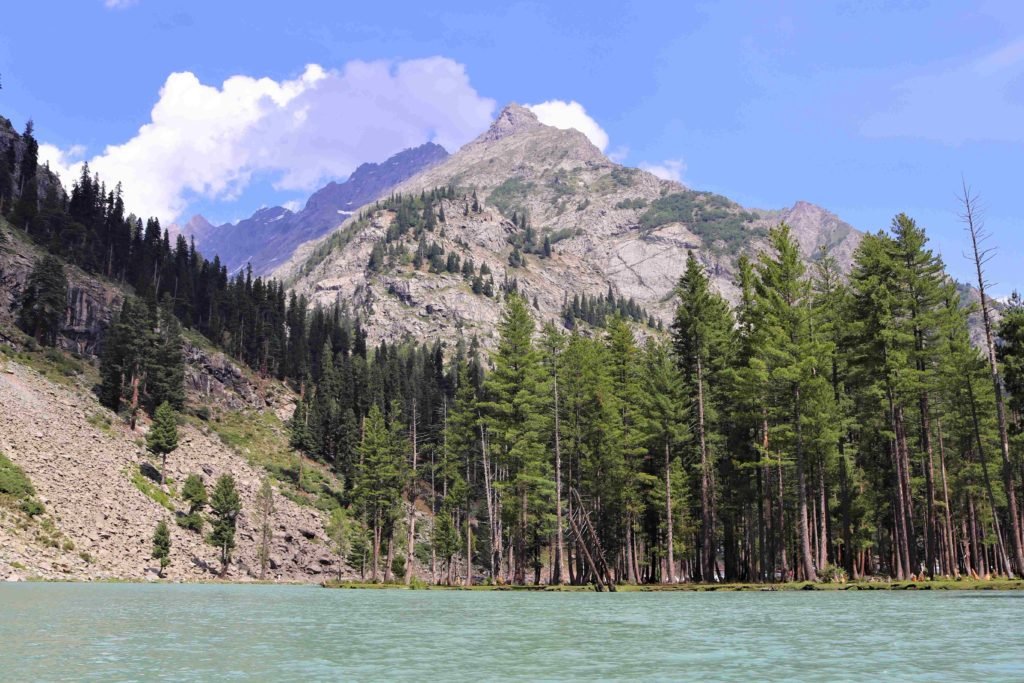
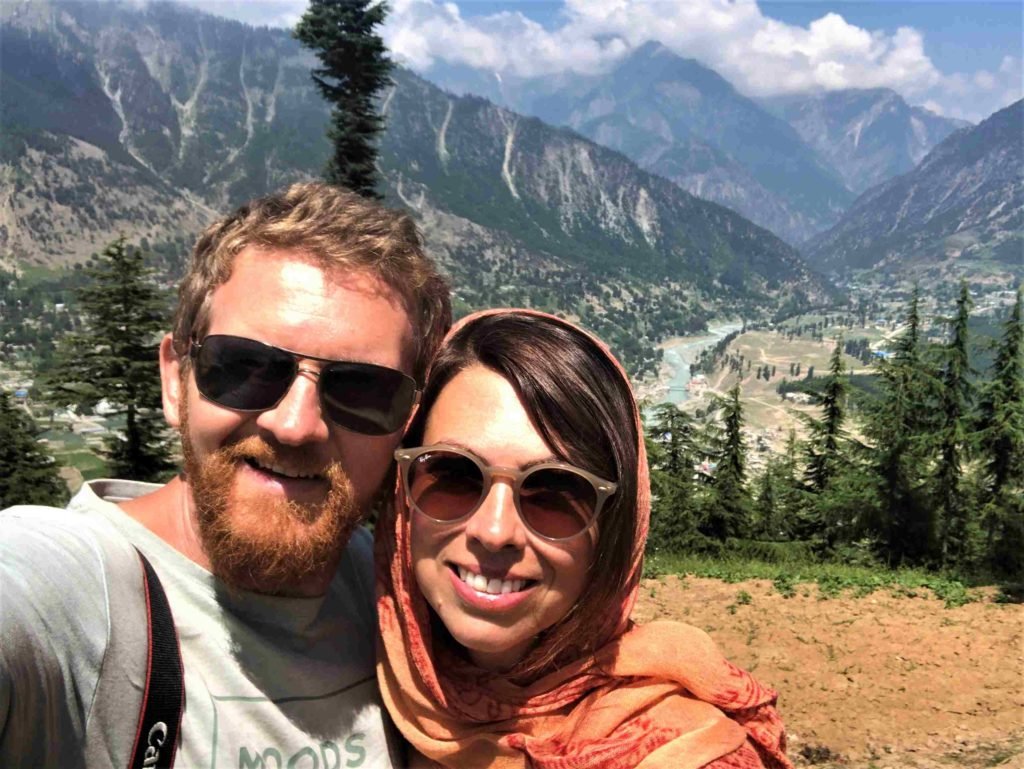
Pakistan might seem an unlikely place to stumble upon Buddhist relics – and so it would be, if the Taliban had had their way. But long ago, Swat Valley was an epicenter of Buddhism and carvings, statues and stupas remain to this day. We hiked up a steep hillside near Jahanabad to see the most famous ancient Buddha, carved into the rock face in the 7th century.
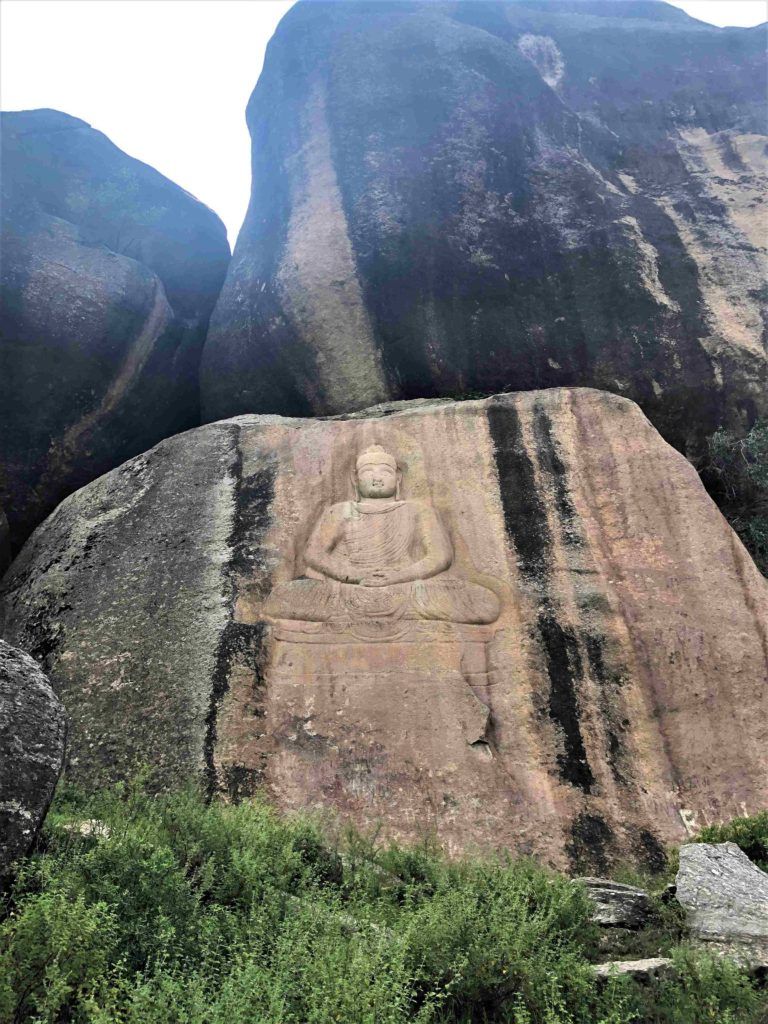
In more recent history, the Taliban dynamited it (it took them two attempts) and blew the face off in 2007, when much of the valley was under their control. In 2016, an Italian organisation restored the Buddha’s beatific smile.
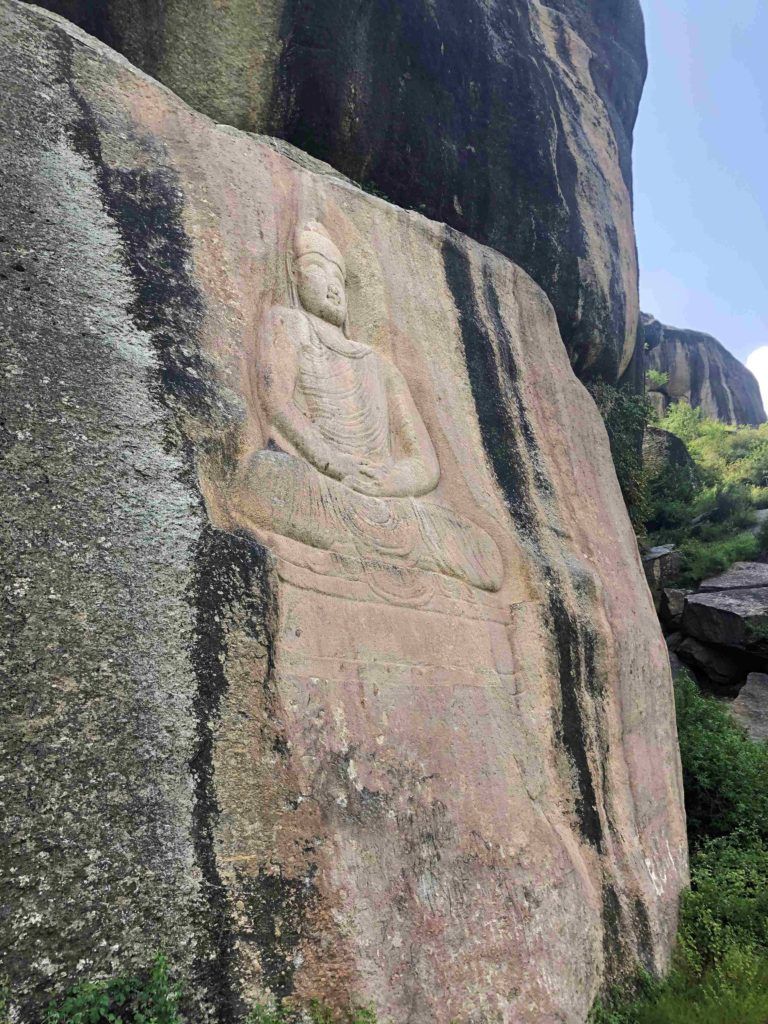
As we drove through winding lanes between low stone walls on our way back to town, a local banged on the car window and handed us a cloth bag filled with peaches from his garden.
Eternally nosy, we stopped to watch a cricket match, but the spectators abandoned the match and swarmed us instead.
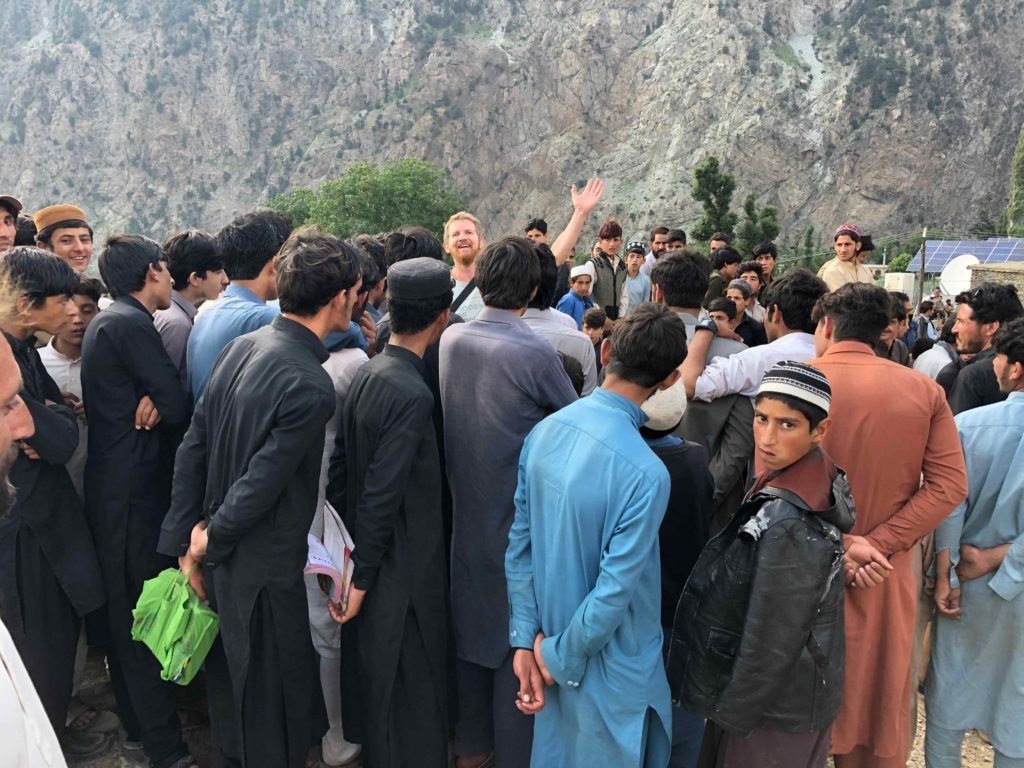
Oyv ended up giving an impromptu interview about our impressions of the country so far and how we felt about traveling here as Westerners (answer: we feel great about it).
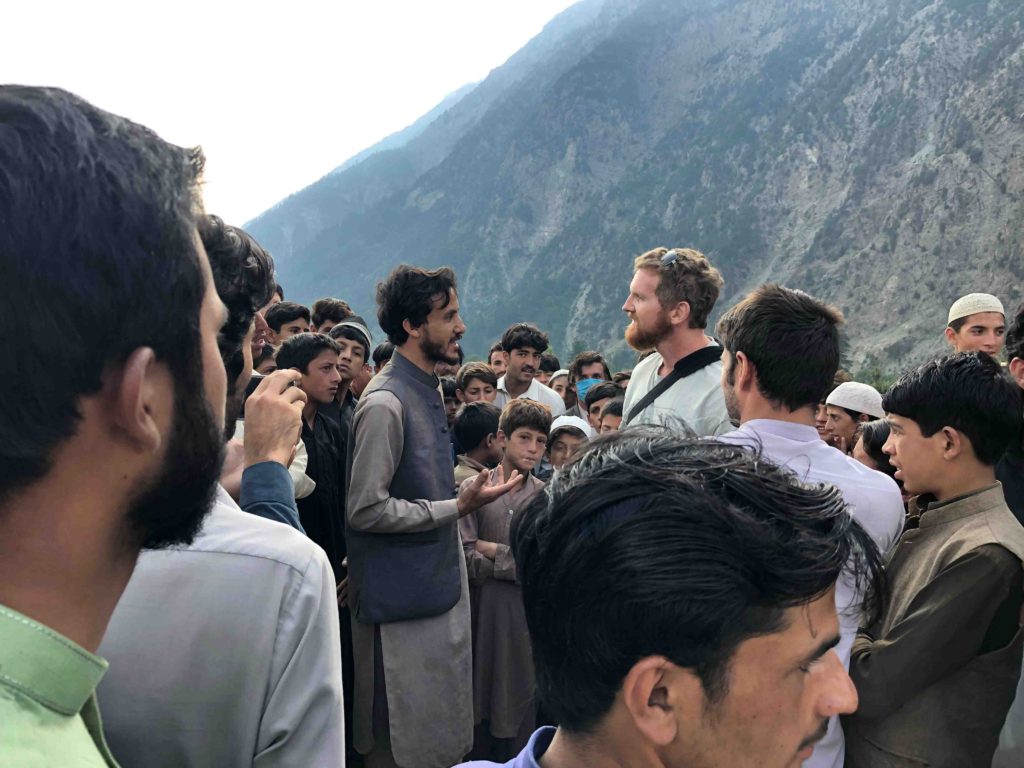
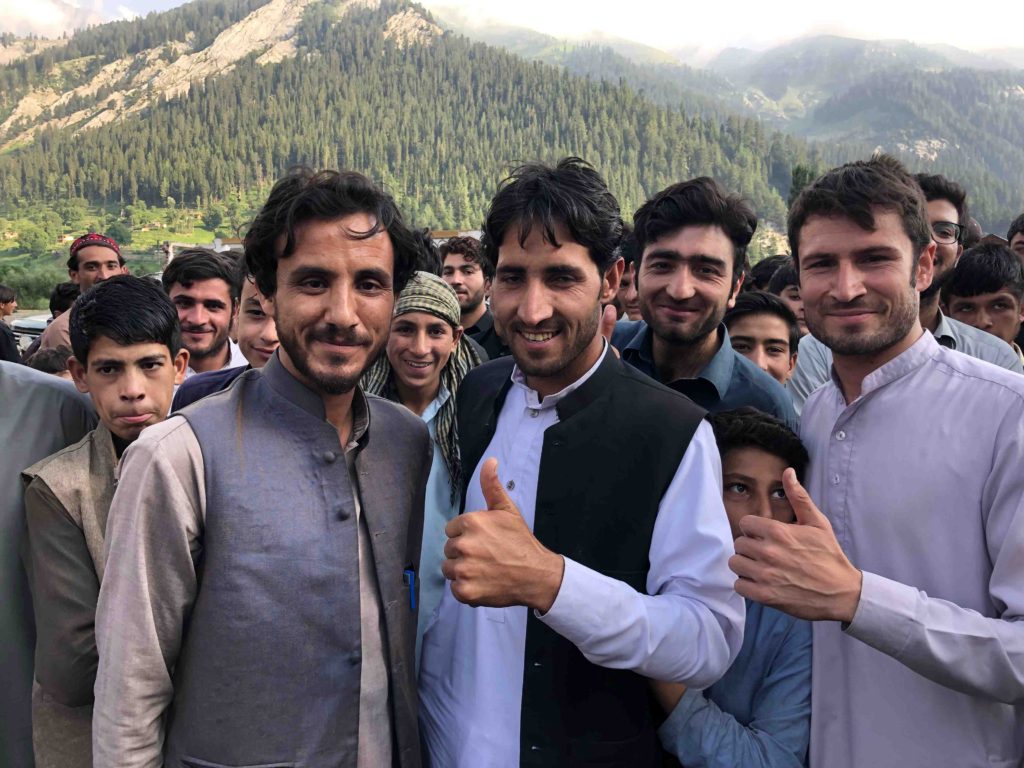
And because this is Pakistan after all, a police officer turned up to do some crowd-control by waving his AK-47 around, and drew everybody’s attention back to the cricket.
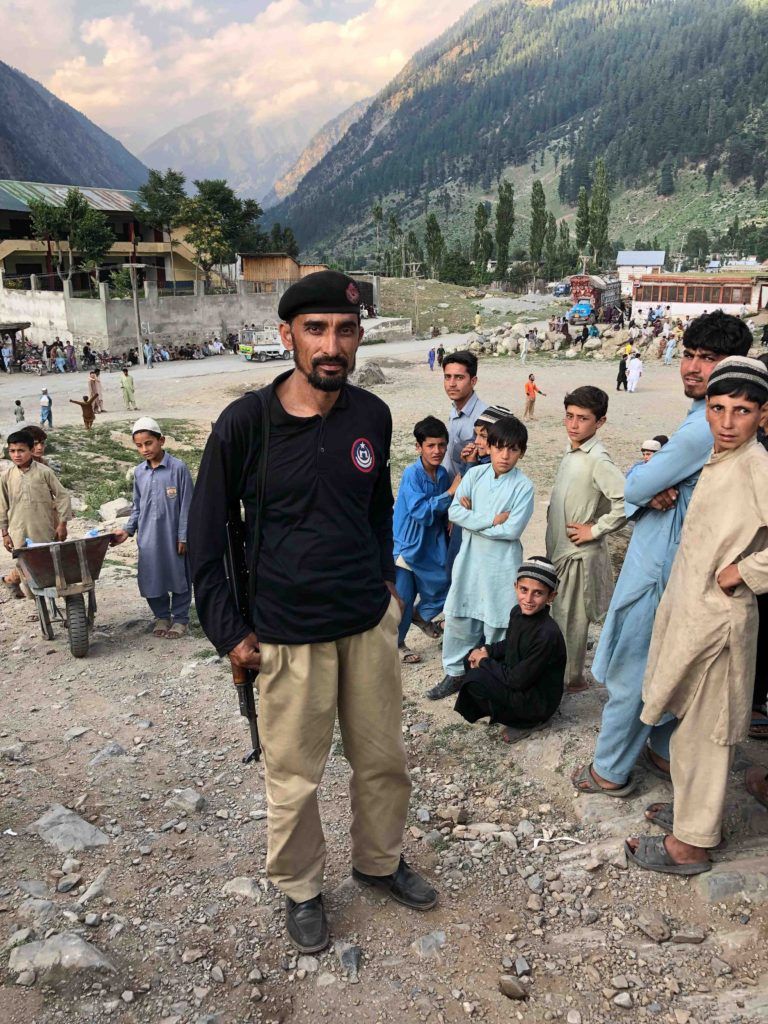
But if Swat Valley sounds familiar it’s probably not because you’re thinking of cuckoo clocks and chocolate but because this is where Malala is from. She’s the teenage girl who was hunted down and shot in the head by the Taliban in 2012 for her vocal resistance to Taliban occupation of the valley and her advocacy for girls’ education. Malala survived, went on promoting educational rights for girls, and won the Nobel prize for her efforts. The Taliban, meanwhile, continued their fight to take control of the valley, lopping the heads off of Buddha statues, destroying schools, banning music shops and trying to impose the death penalty for barbers, until the Pakistani military drove them out and regained government control of the valley.
Sometimes – actually, very often – travel involves an element of trust. We talk to locals about our plans, rely on them for help or advice, take leaps of faith. As outsiders we have no choice but to count on others’ goodwill.
We stashed our luggage behind the desk at our hotel one day. To prevent any confusion as to the ownership of the only two backpacks in the place (probably the only two in the whole town) – the manager chalked ‘Foreign Guest’ onto them both. That’s who we are here, not just another couple of travellers. Everywhere we go we’re welcomed like personal guests by strangers who will go out of their way to show us kindness.
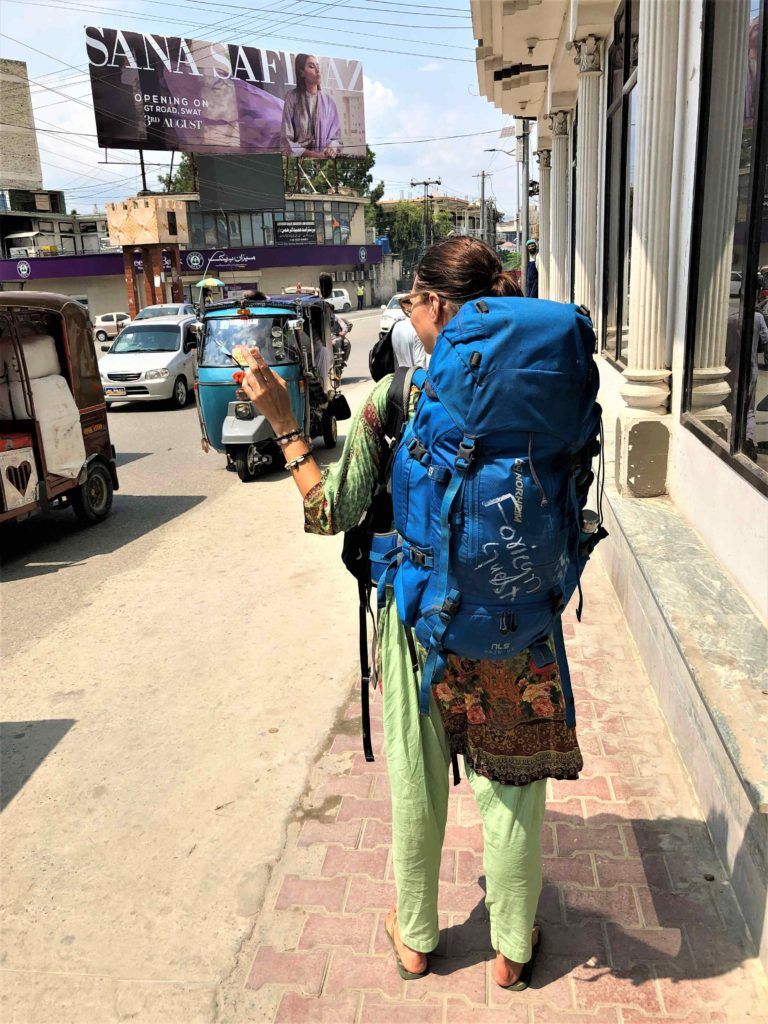
Read More
For more of our adventures (and misadventures) in Pakistan, check out the rest of my stories from the road. And to help you out with all those details – I’ve also written a travel guide for Peshawar and Swat Valley.
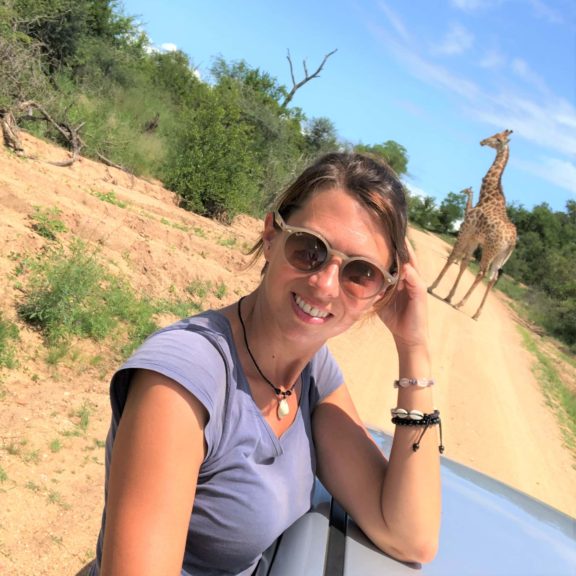
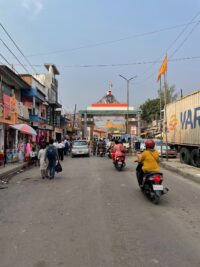
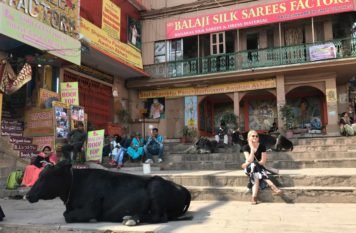
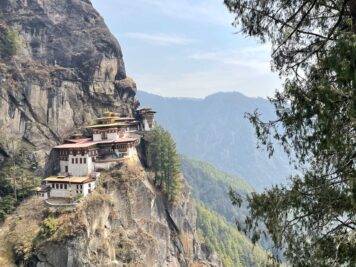
This Post Has 2 Comments
I’d be interested to hear what you found different between Bangladesh and Pakistan, two Indian subcontinent countries on the fringe.
‘Countries on the fringe’, what a good way of putting it. I think a major thing I noticed was in interaction with the locals. As you know, people in Bangladesh are pretty friendly – I always felt welcomed there. But in Pakistan they take it to a whole new level. Whereas in Bangladesh I felt the interest was more ‘curiosity’, all the selfies and staring… in Pakistan I found a lot of really genuine hospitality. Then, there’s the mix of religions and generally more diversity in Bangladesh, it’s more similar to India that way. And, another thing I always take note of – a more visible presence of women in Bangladesh versus (parts of) Pakistan.